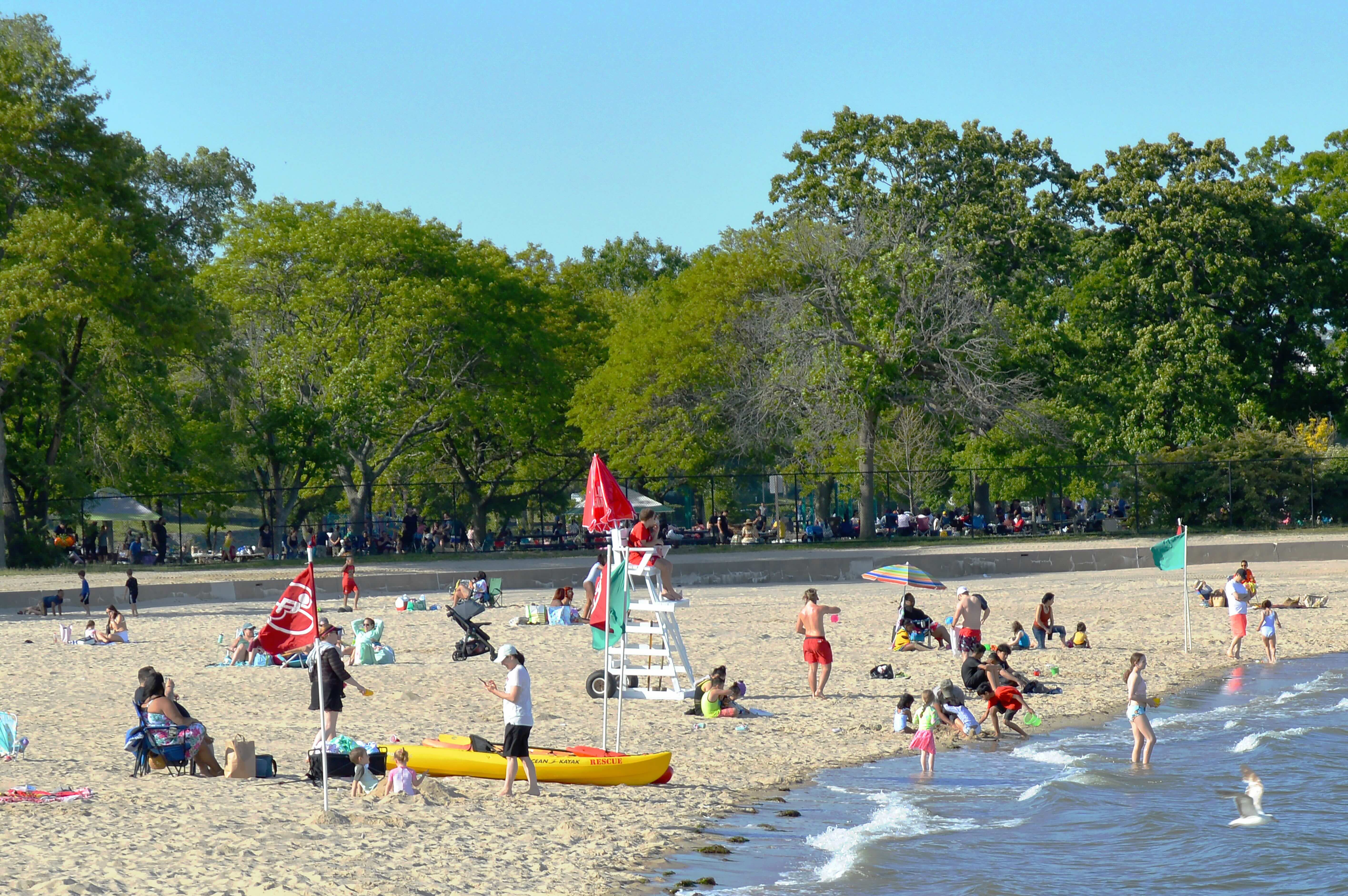Increase in Wet Weather Failure Rates Raises Concern Even as Majority of Beaches Score Well
CENTERPORT, NY AND NEW HAVEN, CT / ACCESS Newswire / May 20, 2025 / Just as beachgoers turn their thoughts to swimming over Memorial Day Weekend and summer days ahead, the regional nonprofit organization Save the Sound has released results of its 2025 Long Island Sound Beach Report. The report grades over 200 beaches along the Long Island Sound shoreline in Connecticut and New York. Staff from Save the Sound were joined on May 20 by representatives from local, state, and federal offices during simultaneous events at Centerport Beach in Centerport, NY and Lighthouse Point Park in New Haven, CT to reveal the grades and discuss the paths to potential improvements.
Beach Grades in the biennial report are assigned based on how water samples collected by departments of health around the Sound perform against state safe swimming criteria. Samples are collected throughout the swimming season during wet and dry conditions and are analyzed for levels of fecal indicator bacteria. The 2025 Beach Report raises concerns about the water quality impacts of rain events driven by climate change, noting an increase in "lost beach days," and wet weather sample failures, particularly in the western Sound. An increase in sample failures was even noted in several eastern Sound beaches.

Based on a three-year average of annual failure rates, wet weather fails across LIS beaches rose from 11.0% (2020 to 2022) to 13.5% (2022 to 2024). The increase is due in part to the failure rate in the westernmost region of the Sound that combines Westchester County and New York City: 14.9% in 2020-2022, versus 20.8% in 2022-2024. Failure rates in other regions were up, as well, most notably Suffolk West (8.7% rising to 12.1%), Connecticut East (7.1% to 10.3%) and Connecticut West (10.9% to 15.6%).During dry weather, samples overall failed 5.1% of the time, an increase from 4.2% in the 2023 report.
Another way of measuring the impact of water quality is to measure the number of days beaches were closed. Save the Sound analyzed data from the Environmental Protection Agency's Beach Advisory and Closing Online Notification (BEACON) system. Beaches were closed or under advisories for nearly 10% of possible swimming days during the 2023 and 2024 seasons. Beaches will often remain closed for several days after a rain event because of predicted elevated levels of fecal contamination delivered to the beach via stormwater runoff. Beaches can also close or be put under advisory when samples for fecal indicator bacteria exceed safe swimming criteria.
The region averaged 18.3inches of rain over the last three years, which matches 2011-2013 as the highest three-year total dating back to 2003. Annual rainfall totals are expected to continue increasing, as isthe frequency and intensity of severe storms, a consequence of climate change that will impact water quality around the region.
David Ansel, Vice President, Center for Water Protection, Save the Sound, commented, "Save the Sound's 2025 Long Island Sound Beach Report demonstrates just how urgent it is that we prioritize new investment in sewage and stormwater infrastructure. If we're not proactive, the impacts of climate change will undo so much of our successful past and ongoing work in restoring the water quality of the Sound."
The report demonstrates that the Long Island Sound as a whole has come a long way from decades ago when swimmers were wary of taking to the water. It notes that 72% of the Long Island Sound beaches monitored earned "A" or "B" grades for water quality. Thanks to years of advocacy and investment by environmental leaders, municipal governments, the states of Connecticut and New York, the EPA, and concerned communities, the Sound is now ringed with many beaches that consistently provide water quality that meets safe swimming criteria. To illustrate this positive news, the Beach Report includes lists of the 10 highest scoring public beaches on Long Island Sound in both New York and Connecticut, based on their three-year grades from 2022-2024.
Save the Sound's dedicated website www.SoundHealthExplorer.org features interactive maps listing beach water quality at all 204 monitored beaches. The site features over two decades of water quality data for Long Island Sound and highlights key issues including aging sewer and stormwater infrastructure in the region. It includes links to current beach conditions at many beaches, and also features a "beach access" section including information on which beaches offer public access, the location of kayak and canoe launches, and more useful information. The full 2025 Long Island Sound Beach Report may be downloaded at www.SoundHealthExplorer.org and www.SaveTheSound.org.
About Save the Sound
Save the Sound leads environmental action in the Long Island Sound region. We protect the Sound and its rivers, fight climate change, save endangered lands, and work with nature to restore ecosystems. For more than 50 years, we've been ensuring people and wildlife can enjoy the healthy, clean, and thriving environment they deserve. From our offices in Larchmont, NY and New Haven, CT, Save the Sound works for a cleaner, healthier, and more vibrant Long Island Sound. The organization's success is based on scientific knowledge, legal expertise, and thousands of ordinary people teaming up to achieve results that benefit the environment for current and future generations. Learn more at www.savethesound.org.
###
Media Contact: Burns Patterson
burns@hudson-pr.net
(917) 575-9155
SOURCE: Save the Sound
View the original press release on ACCESS Newswire

